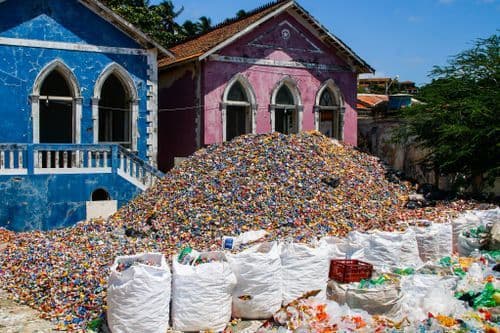
15/02/2023
Carnival leaves 3,500 tons of trash on the streets of five capitals
After two timid and reclusive years, Carnival is once again showing its face across the country. It involves four, in some cities five or more, days of music, dancing and joy. The party is superlative from start to finish. When it comes to the end, a large army of people and machines steps in to clean up the city. In 2020, it had 3,500 tons of garbage collected in five Brazilian capitals.
Very little of this waste produced in Salvador, Belo Horizonte, São Paulo, Recife and Rio de Janeiro was destined for recycling. Most went to landfills or ended up deposited in nature. Data from the Urban Solid Waste Management Diagnosis in Brazil indicate that only 4% of solid waste is recycled in the country. To change this scenario, it is necessary to practice the mantra: rethink, reduce and recycle. Throwing trash in the trash also helps a lot.
The practice of the three “Rs”, associated with the circular economy, is the main ally of sustainable Carnival, explains the pedagogical coordinator of the Circular Movement, Edson Grandisoli. “Rethink consumption and buy what really makes sense for fun. Reduce the consumption of single-use utensils, such as plastic cups. Recycle, disposing of waste correctly. The three r’s make the revelry even more beautiful”, he says.
The mission belongs to everyone. Grandisoli points out that event organizers, whether public or private, need to ensure adequate structure for the collection and correct disposal of waste produced. Samba schools must use materials in quantity and quality that can, in their entirety, be reused or recycled after the end of the festivities. “That is, to adopt a policy of zero waste (trash), as is already being done by some associations”, he comments.
The carnival blocks are responsible for not throwing trash in the streets, preferring reusable utensils and avoiding costumes that could harm the environment. Most of the waste generated at Carnival is plastic, glass, and paper. “If they are not collected selectively, these materials tend to end up in sanitary landfills and dumps, and even being left on the streets can collaborate with flash floods”, recalls Grandisoli.
It is possible to rethink the entire party, including replacing glitter, sparkles and sequins with ecologically correct materials. Even paper confetti can be replaced with dry leaf confetti, which are more environmentally friendly.
“All material discarded incorrectly ends up causing problems for the environment, harming water, soil, atmosphere, and different forms of life. The ideal, within the perspective of the circular economy, is that the waste is not even produced, which is why reducing consumption is so central to this proposal”, explains Grandisoli. The goal of the Carnival of the future, and of the circular economy, is not to generate any waste.
Reaching this point requires immediate attention and emergency measures. “The main tip for starting this project right now is for everyone to take responsibility for their own waste. Cups, costumes, cigarette butts, plastic ornaments, practically everything, after all, can be given a nobler destination than dumps or landfills. That is the challenge”, says Grandisoli.
Photo: Archive/Alice Mafra/Olinda City Hall
What is the circular economy?
The Circular Economy proposes a new look at our way of producing, consuming, and disposing, in order to optimize the planet's resources and generate less and less waste. In other words, an alternative model to the Linear Economy - to extract, produce, use and discard - which has proved to be increasingly unsustainable throughout history. In the Circular Economy, the goal is to keep materials in circulation longer by reusing them until nothing becomes waste! For this model to become a reality, we all have a role to play. It is a true collaborative circle, which feeds itself, and helps to regenerate the planet and our relations.
Learn about Circular Economy
If you are interested in learning more about this topic, visit Circular Academy , the first free Latin American course on circular economy aimed at general audiences. All of us, in partnership and collaboration, can make a difference in building a more circular planet.

